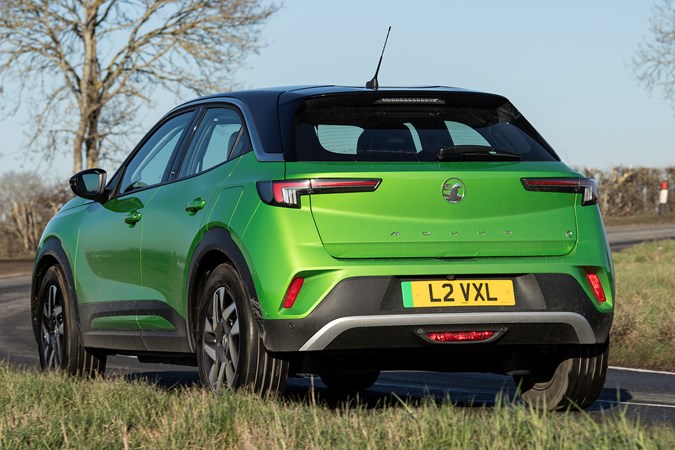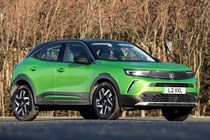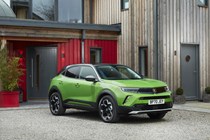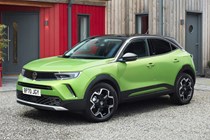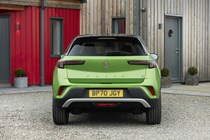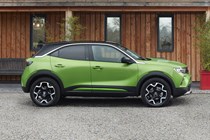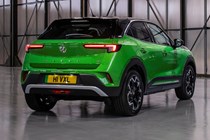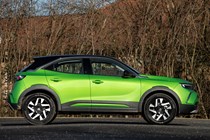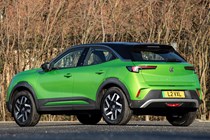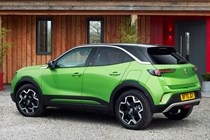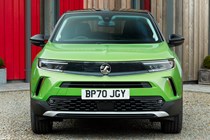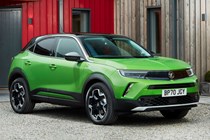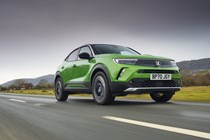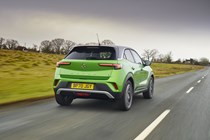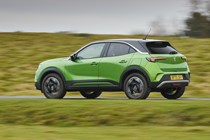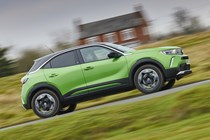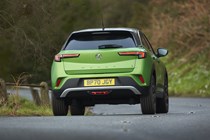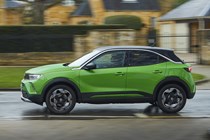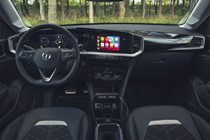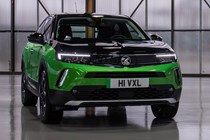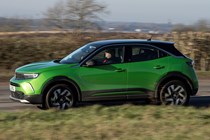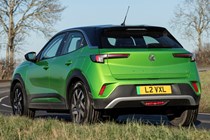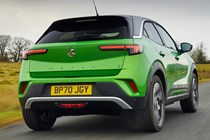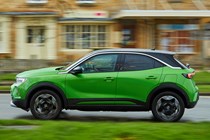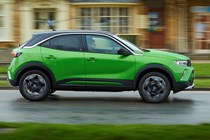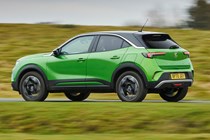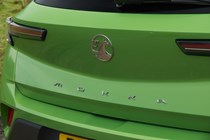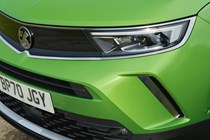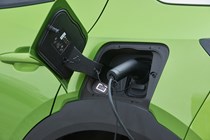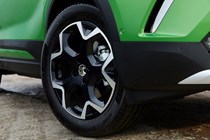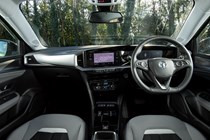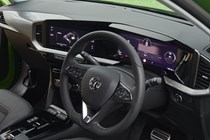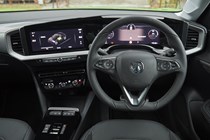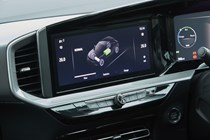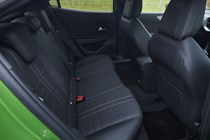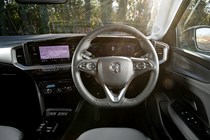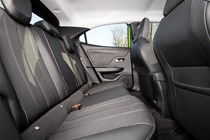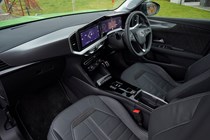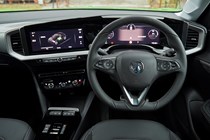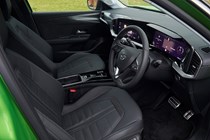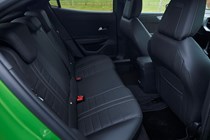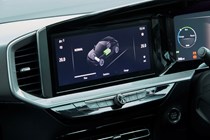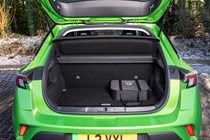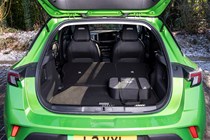
Vauxhall Mokka-e SUV (2020-2025) engines, drive and performance
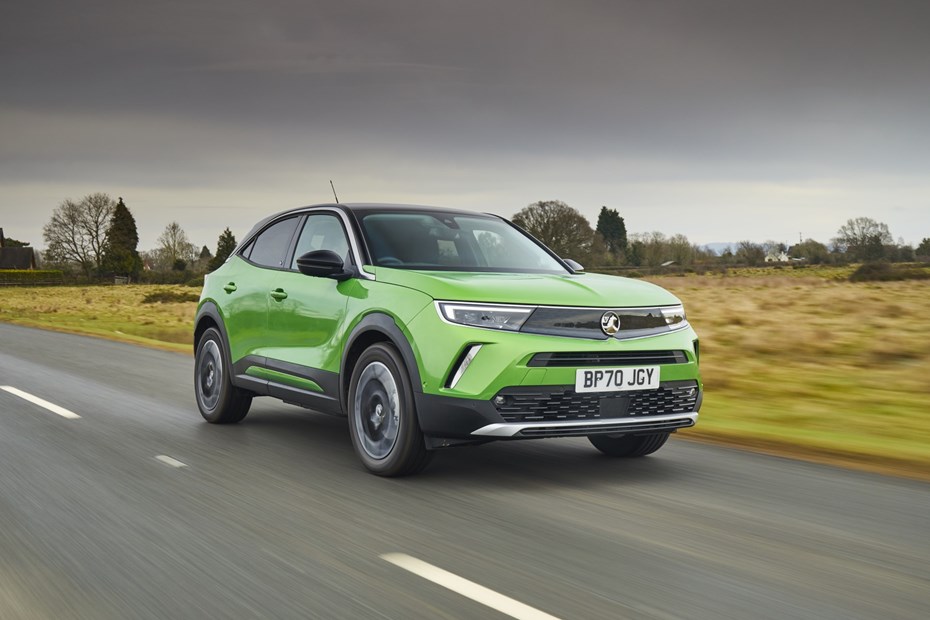
- Two drivetrain options
- Three power modes to choose from
- Punchy at low speeds
What power options are there?
The Mokka Electric is powered by either a 136hp electric motor with 50kWh battery pack or a 156hp electric motor 54kWh battery pack – the latter known as the Long Range. These are the most powerful Mokkas available, leaving their petrol-powered cousins far behind for sprinting ability. Top speed is limited to 93mph for both models, with 0-62mph times of 9.0 (Long Range) and 9.3 seconds (standard).
Vauxhall has designed the drive modes in the Mokka Electric GS and Ultimate versions to allow owners to balance performance and driving range. Eco mode limits power to 82hp, Normal allows up to 109hp and switching to Sport means all of the power is available is on tap. It’s not Tesla Model 3 quick, and those expecting rapid acceleration might be a little disappointed, especially in Eco drive mode. But it certainly feels nippy enough in town for us, even if it tails off noticeably above 50mph.
In all but Eco mode, we found the distance to empty range indicator reduces depressingly quickly. Battery capacity is represented in percentages, and in cold weather, this can reduce at almost the same rate as the miles left in the ‘tank’. That would indicate a usable driving range of 120 miles in typical winter driving, with a little more in the Long Range version.
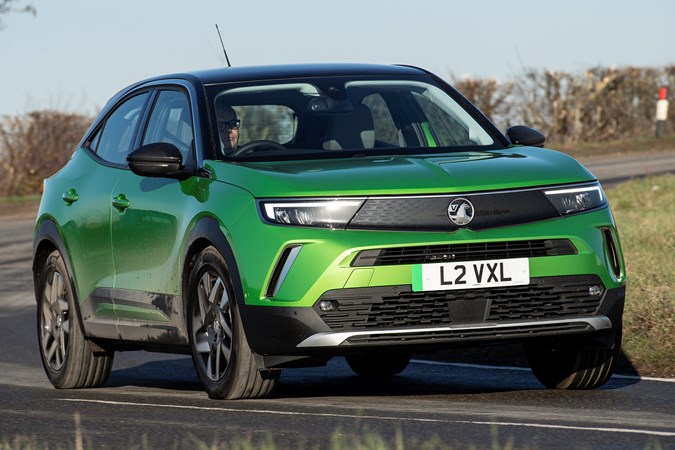
What’s it like to drive?
- Quiet and refined cruiser
- Stable over bumps
- Excellent ride quality
The Mokka Electric is quiet on the move (as you’d expect for an EV), with little wind noise or tyre noise – commendable for a car designed to run both an electric powertrain and combustion engine variants. The steering has more weight than the Peugeot e-2008’s – a car the Mokka Electric shares its battery, motor and suspension with – and bodyroll is well controlled.
Since the car defaults to Normal mode every time you start it, this is the mode you’ll get used to, and switching to either of the other two settings means we had to adapt our driving style to suit the car’s different character. It’s not that the transformation is huge, but the throttle response in Power mode is that little bit faster, so we founf we needed to be a bit slower with our inputs.
On the other hand, choosing Eco mode means the Mokka Electric feels sluggish to accelerate, and we needed to press the accelerator harder to get it upto speed. That probably cancels out any effect that the power-saving mode might deliver. Selecting ‘B’ mode delivers some useful energy recovery when lifting off the pedal, but it’s not strong enough for one-pedal driving, and brakes are needed to come to a complete stop.
One thing to be aware of is that the electric drive system doesn’t cope very well with higher speeds. There’s nothing wrong with the Mokka Electric at speed, but going faster sees the car’s driving range drop dramatically. Another positive is the ride quality, which is very good – almost up there with the class-leading Citroen e-C4 – and manages to shrug off urban potholes and motorway imperfections very well indeed.
